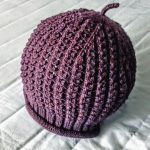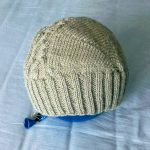Once upon a time there was a knitting guild in Sonoma County, but times change and so do organizations. The knitting guild folded, and a few years later the weavers and spinners rebranded as the Redwood Guild of Fiber Arts (RGFA) to include the full range of things we do with fiber and the people who do them.
Those of us who are primarily knitters wanted more opportunities to learn and explore our craft than the annual RGFA program devoted to knitting and the general interest programs on color, creativity and textile history. Guild study groups for a variety of fiber specialities already existed. It seemed time to add one for knitting.
At several monthly Guild meetings, starting in the late spring of 2016, I provided sign up forms and sheets. Sending around a clipboard, the standard procedure at our meetings, worked best. In the fall I emailed everyone who had expressed even vague interest and invited them to a meeting at my house. This gave me an opportunity to do a thorough cleaning of my condominium’s sitting room, but there was nothing I could do to make it any larger, so we brainstormed possible meeting venues. We also agreed on a monthly meeting day and time.
Within days one of us had followed up with the Hen Haus, a friendly boutique and yarn shop in Cotati, California, a central location for us, and we were rolling. At our organizational meeting we also chose a first project challenge: a lace cap.

simple lace cap
At each meeting we share what we have done with the challenge we have set ourselves, telling what we have learned. One member, with ten years of knitting off and on (“more off than on”) has commented how much she learns by listening to more experienced members recount what they have done to resolve knitting problems. We also do some general sharing about what we are knitting, admire one another’s work, and decide whether to continue the present challenge or move on to a new one.
Some of us have been knitting pretty regularly for 50 years or more, and some are relatively new or returning knitters. Some of us work only with handspun yarn and others with mostly commercial yarn. We have tried to choose challenges that provide opportunities for each of us to learn something and stretch ourselves regardless of where we are on our knitting journeys.
For example when we chose a technique to learn more about, short rows, some members did swatches of every method they could find. Others chose one method as a first attempt at short rows, and yet others chose a project by which to learn a short row technique they hadn’t tried. Two of us sat at the meeting with the description of a technique that was totally new to us and worked through the confusing instructions until we had it. For some, this hands on learning together is the easiest way to quickly master a new technique.

short rowed Cap
In addition to short rows and the cap, we have tackled adding to the cast-ons and bind-off styles in our repertoires. We are now experimenting with linen stitch and its other fabric-resembling cousins. We plan to challenge ourselves with some aspect of color work after our May guild program on using color in the fiber arts.
With ten people on our list and five to eight showing up at each meeting, our ongoing method of organizing is pretty easy. One of us sends an email after each time we gather, summarizing what we did and describing the next challenge. Another email reminder goes out between the monthly full guild meeting and our monthly study group meeting. From time to time various group members send an email to the list suggesting an idea or sharing a resource.
Having a knitting study group has also added to the visibility of knitting in the RGFA as a whole. We are not just those who knit through each business meeting, but those who can assist and encourage others who aren’t primarily knitters but want advice or troubleshooting on the occasional knitting project. We have also begun an effort to add more books on knitting history and technique to our Guild library.
One of our members reflected on the camaraderie of being with those who want to learn something new. “All of us, regardless of our experience, are stepping out of our safe zones, and it’s helpful to have people to do it with.” Is there any better reason to start a study group?
Phina Borgeson has been knitting for 55 years, but still has a lot to learn. A retired Episcopal deacon, she keeps busy with both hands-on and advocacy work for a just and sustainable food system in Sonoma County.